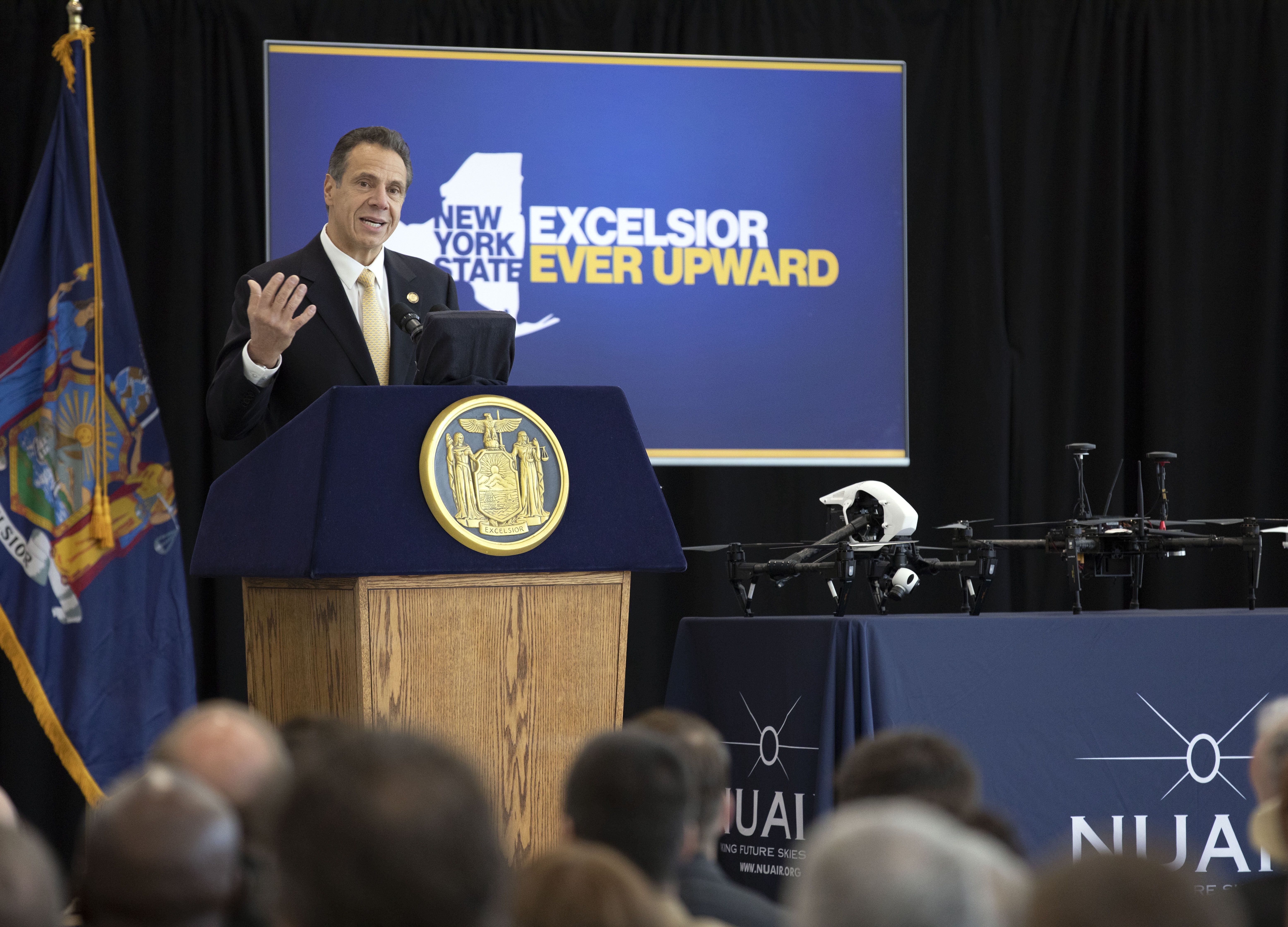New York Governor Andrew Cuomo announced the completion of a 50-mile unmanned traffic management corridor on Tuesday. The corridor, which is being called the first of its kind to be established in the U.S., will be used for testing unmanned aerial systems (UAS/drones) and unmanned traffic management (UTM) technology. It runs from Syracuse International Airport (SYR) to Rome, New York.
“With the needed infrastructure now in place, companies will be able to test both unmanned aerial systems platforms and UTM technologies in real world settings, generating data that will inform the industry and regulators and taking us one step closer towards the routine commercial use of drones,” the governor’s office said in a statement. “The completion of the corridor advances the regions’ collective strategy to accelerate and support emerging uses of UAS in key industries … ”
The New York Unmanned Aircraft System Test Site at Rome’s Griffiss International Airport (RME) received FAA approval for beyond visual line of sight (BVLOS) drone operations within the first segment of the corridor last week. The State of New York invested approximately $30 million in the UAS corridor project, which was introduced in 2016. Cuomo also announced a $12.5 million project to expand Syracuse’s Tech Garden, a technology incubator that runs the GENIUS NY UAS competition.




































Hmm!
I’ll bite.
How do you spend $30 million on a UAV corridor?
My property values! My money. My money!!!! (livin’ the dream!)
The Way of the A380.
Am I the only one who thinks it would be relevant to know the other dimensions, width and height, of the corridor?
No one spends (wastes) money like the corrupt politicians in Albany, NY.
New York – State of Disgrace!!
I disagree, Mike. There’s lots of competition all around the world.
OMG!! What is a state governor doing messing with clearly Federal issues? Why NY? How about using some existing Restricted airspace out west? Or is that too logical, value conscious, and sensible? Cuomo and NY plus my sorrowful state of NJ really know how to blow our hard earned tax dollars.
Where does the U.S. Constitution authorize the federal government to say anything about drone corridors in any state? The enumerated powers are few. It doesn’t take long to read them. It’s not there. No amendment, either.
I’m curious too. Why are taxes used to pay for an experiment to evaluate unmanned aerial drones? Are the delivery companies (USPS, UPS, FEDEX, DHL, Amazon) chipping in? They would be interested in drone delivery systems and can help with development costs rather than allocate taxes for dubious purposes that appear to have zero benefits for residents. NYS infrastructure maintenance is woefully inadequate among other pressing concerns that use finances for upkeep. How does this 50 mile corridor help, improve, expand, reveal beyond line of sight drone activity to benefit residents?
$30 million is nothing but a bunch meetings and press releases. Like him or not, that is how we got our current President. Everyone knows inside that we have too much government doing many stupid and harmful things. At the same time, we don’t understand or trust the idea of losing any laws or services. It doesn’t take much of a sales pitch to save a useless government program.
The irony and hypocrisy here are breathtaking.
Aviation industry research and training advocacy “led” by this “Governor”?
17 Years ago as Attorney General, Andrew Cuomo forcefully backed up then SUNY Chancellor King and Farmingdale State College President Gibraltar in their taxpayer-paid-PR-flack-managed attempt to shut down and sell off the state’s only four year aviation degree program. They despicably used 9/11 as an excuse and quickly incorporated a deliberate humiliation and smear campaign against the Flightline Director who refused to go along, instead exposing and opposing them. He sacrificed his career for his twin academic/aviation professions, students, dispatchers, mechanics and instructors, being terminated on the same day they admitted defeat after his sounding the alarm inspired a coalition of legislators, parents, and students to save the program. As befalls many whistleblowers, he lost his income, marriage, health and home, but was given a national aerospace educator award by the University Aviation Association two years later. The SUNY flightline survives and thrives to this day.
Almost 1 million dollars of taxpayer money a mile for WHAT exactly?